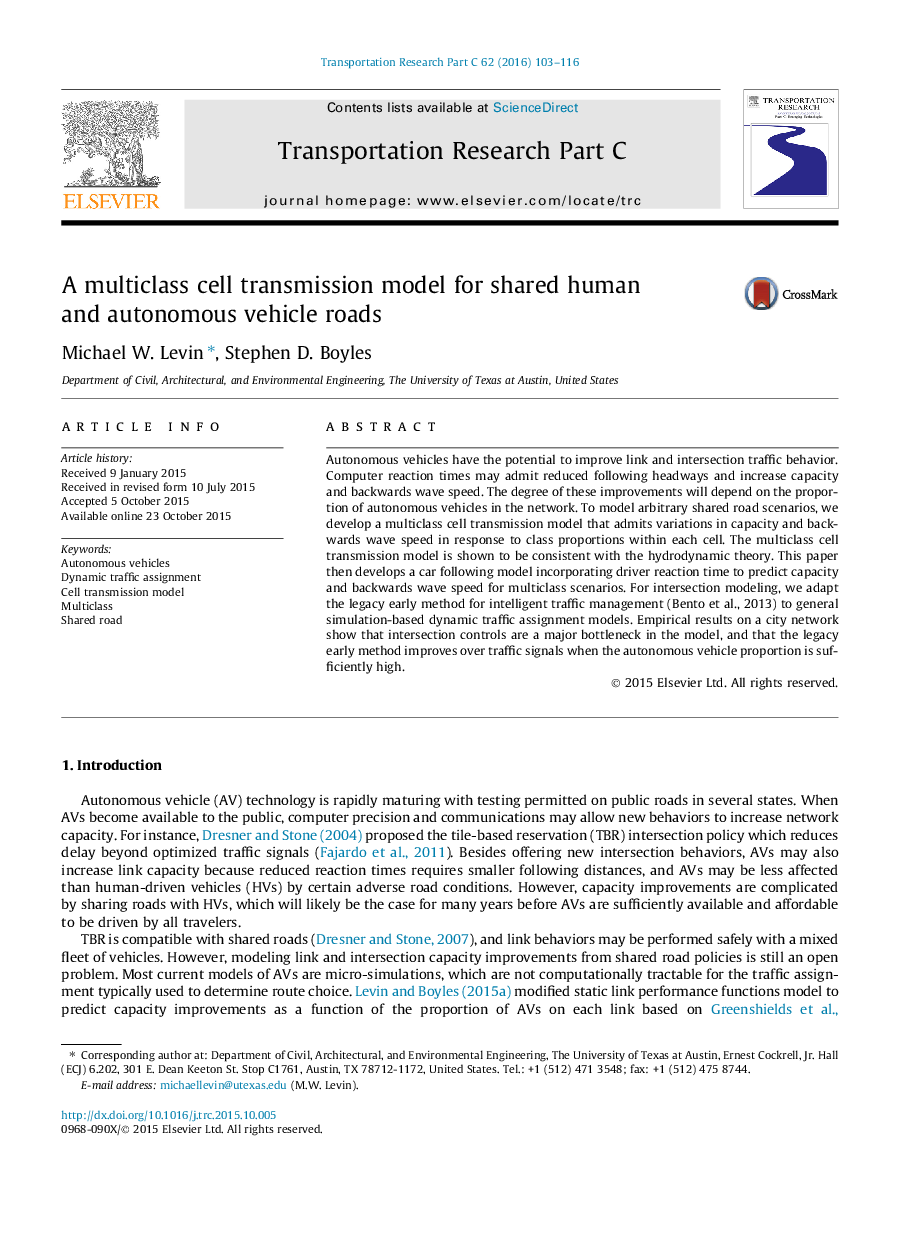| Article ID | Journal | Published Year | Pages | File Type |
|---|---|---|---|---|
| 524847 | Transportation Research Part C: Emerging Technologies | 2016 | 14 Pages |
•We develop a multiclass cell transmission model consistent with hydrodynamic theory.•Capacity and backwards wave speed are modeled as functions of reaction times.•A shared intersection model is adapted for dynamic traffic assignment.•Reservation-based intersection controls improve over traffic signals when the proportion of AVs on the road is sufficiently high.
Autonomous vehicles have the potential to improve link and intersection traffic behavior. Computer reaction times may admit reduced following headways and increase capacity and backwards wave speed. The degree of these improvements will depend on the proportion of autonomous vehicles in the network. To model arbitrary shared road scenarios, we develop a multiclass cell transmission model that admits variations in capacity and backwards wave speed in response to class proportions within each cell. The multiclass cell transmission model is shown to be consistent with the hydrodynamic theory. This paper then develops a car following model incorporating driver reaction time to predict capacity and backwards wave speed for multiclass scenarios. For intersection modeling, we adapt the legacy early method for intelligent traffic management (Bento et al., 2013) to general simulation-based dynamic traffic assignment models. Empirical results on a city network show that intersection controls are a major bottleneck in the model, and that the legacy early method improves over traffic signals when the autonomous vehicle proportion is sufficiently high.
